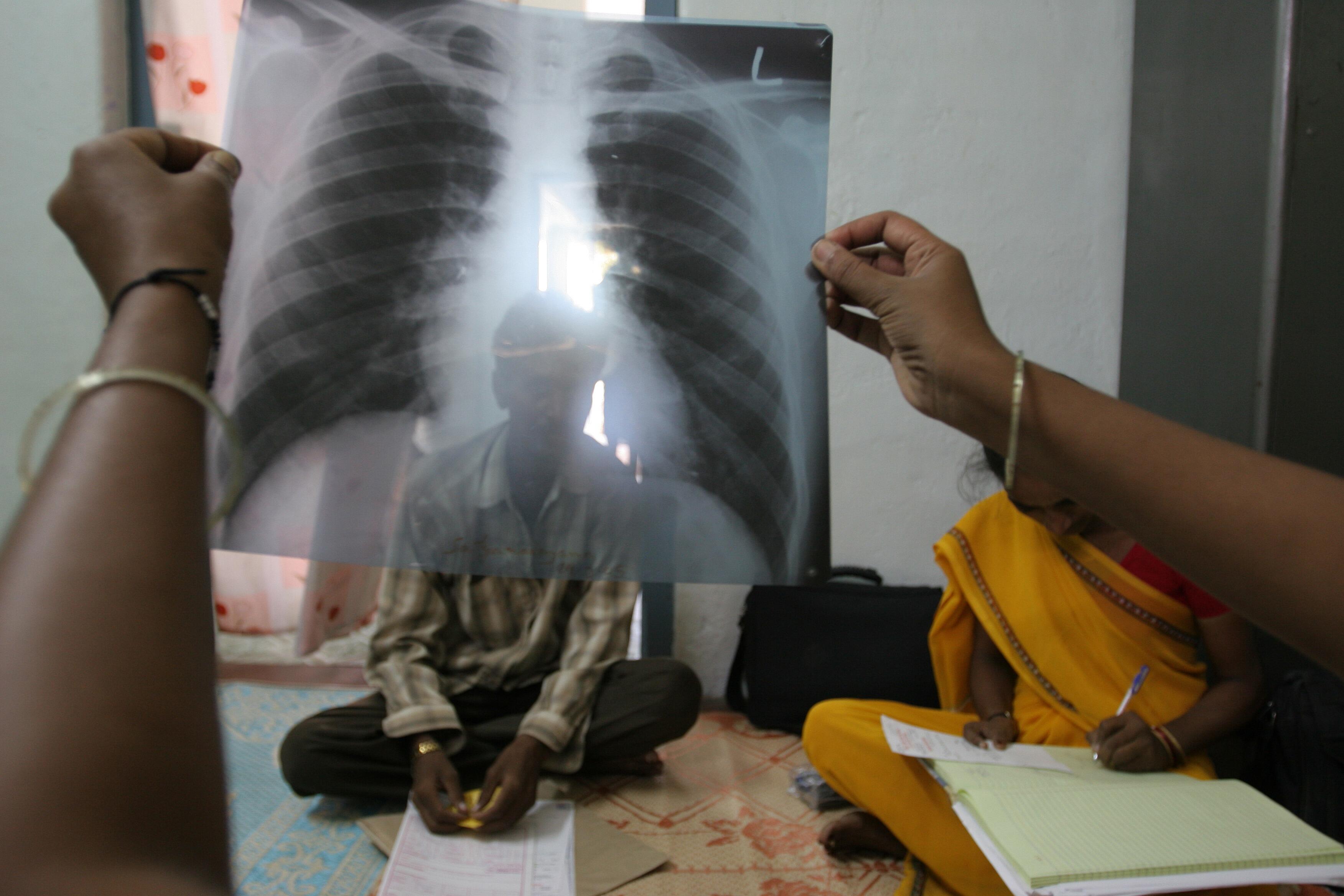
Early LSTM research led to the publication of the World Health Organization (WHO) Options for National TB Control Programmes ‘Addressing the Poverty in TB control’ in 2005. Further research led to WHO endorsement of same-day diagnosis of TB by smear microscopy (SM) in 2010. This strategy has been implemented in Malawi, Nigeria, Yemen, Ethiopia and Nepal. Alongside this LSTM has developed and tested approaches to bring diagnosis and treatment for TB closer to the community. Same-day diagnosis and close-to-community approaches have led to improvements in access to TB care and treatment, and reductions in costs incurred during care-seeking by poor patients in these countries and elsewhere.
Underpinning research
Tuberculosis (TB) is a contagious and often severe airborne disease caused by a bacterial infection. In 2012, an estimated 8.6 million people developed TB and 1.3 million died from the disease. Three million of the annually estimated 8.6 million cases of TB are missed by healthcare services. The gap of three million cases is the difference between the expected prevalence and the reported number of diagnoses (surveillance data). Increasing case detection is therefore an international priority. Smear microscopy tests (the main test used for diagnosis) have a low acquisition cost and have low sensitivity. For several decades, because of the low sensitivity of SM, patients have had to provide three separate sputum samples for examination. This process requires several visits and substantial out-of-pocket expenditure.
LSTM research in Malawi and Ethiopia assessed patient and household direct and opportunity costs of accessing TB services. This demonstrated that poor patients (an income of <US$0.25/day) needed to spend 244% of their monthly income accessing TB healthcare services.
- Solution 1: Improving case definitions, diagnosis and detection of TB
LSTM researchers were the first to use a validated measure of poverty based on questions regarding a limited range of assets as a proxy for income. Research in Ethiopia and Nigeria reported similar difficulties in accessing services, concluding that patient and household costs of TB diagnosis are prohibitively high even where services are free. In both settings, many patients stopped attending the services before achieving a diagnosis.
LSTM demonstrated that most patients are diagnosed by the first two smears; smears with low numbers of bacilli are true-positive results. One positive smear is sufficient for a positive diagnosis; and that diagnosis can be reached in one day (same-day diagnosis). Previously it was perceived that smears with very few bacilli could be false positive, and thus the control programmes required that patients have at least two smears with few bacilli. By demonstrating this, control programmes could consider one smear with few bacilli as true positive. LSTM conducted multi-country evaluations in Nepal, Nigeria, Yemen and Ethiopia, which demonstrated that single-day diagnosis had the same level of performance as older schemes.
LSTM conducted a systematic review of same-day SM and presented data to the WHO to inform development of policy guidance. Implementation of the new WHO recommendations on smear microscopy and LED based fluorescence microscopy combined would result in substantial increases in smear positive case-detection using existing human resources.
- Solution 2: Community-based approaches to improve access to diagnosis and treatment
LSTM led work in Malawi demonstrating that engaging informal providers (shopkeepers) in recognising disease and referring patients doubled TB case detection and reduced the time delay to diagnosis by 75%.
LSTM led studies engaging village-based health extension workers (HEWs) to facilitate access to diagnosis and treatment in Ethiopia. HEWs identify individuals with symptoms of TB and collect and prepare smears and transport to the diagnostic laboratories. In Yemen, HEWs visited the homes of adults with TB to identify secondary cases that had not consulted healthcare services and, in Nigeria, HEWs visited households in slums and tested specimens. In Ethiopia these approaches have led to a greater than 100%, increase in case detection, and in Nigeria, to a 70% increase.
Details of impact
LSTM’s work on strategies to improve access to TB diagnosis and treatment was driven by pro-poor and equity perspectives and understanding of the barriers that prevent disenfranchised populations accessing healthcare services. These research programmes have directly influenced policy and local TB control programmes practice.
- Policy:
Achieving policy change in TB healthcare at the international level requires primary research evidence, time and extensive engagement with researchers, policymakers and funding agencies.
-
Practice:
The National TB Programme in Malawi is engaging informal providers in recognising disease and referring patients as part of national policy. The Nigerian National TB and Leprosy Control programme is exploring whether the Global Fund could provide financial support to include Community-based approaches within its programme, a statement can be provided from the National Coordinator to corroborate Nigerian approaches. The Ethiopian Regional and National Health services are expanding a Community-based approach from a base of three million to seven million population as a package of the regional and national Health Extension Programme. LSTM’s work engaging community health workers has been described as a ‘pathfinder for TB’ by the WHO.
For more information on this impact case study including research references; key research grants and sources to corroborate the impact please click here.
This impact case study was part of LSTM’s joint submission with University of Warwick to REF2014.